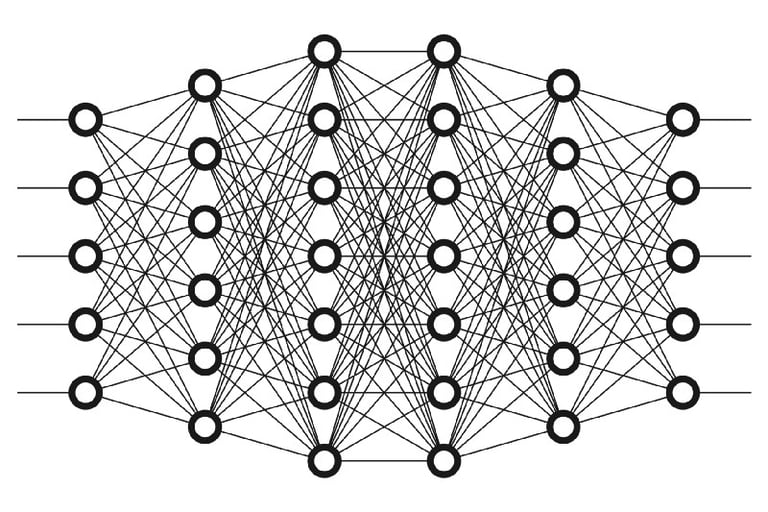

Deep Learning: Cats vs Dogs Image Classification with Convolutional Neural Network (CNN)
Project by: Madan Timilsina
Technologies: TensorFlow, Keras, MobileNetV2, WSL2, CUDA
GitHub: Github madantimilsina
PDF view: PDF document
How the program works?
Table of contents
1. Introduction
Project overview
Motivation
Key Achievement
2. Technical setup
Environmental configuration
Python Virtual environment
WSL2 and NVDIA CUDA integration
Tools & Libraries
Critical Dependencies
GPU Verification
3. Dataset preparation
Directory Structure
Training and Validation Paths
Dataset Splitting Strategy (80/20)
Data Augmentation
Techniques Applied (Rotation, Flipping, Zoom)
Normalization Process
4. Model Architecture
Transfer Learning with MobileNetV2
Base Model Configuration
Freezing Layers
Custom Classification Layers
Dense Layers and Activation Functions
Model Compilation
Optimizer Selection (Adam)
Loss Function and Metrics
5. Training & GPU Acceleration
Training Configuration
Batch Size Optimization
Epoch Strategy
GPU Utilization
WSL2 CUDA Setup
Performance Benchmarks (CPU vs. GPU)
1. Introduction
The classification of cats and dogs in images is a foundational challenge in computer vision, often serving as a gateway to understanding deep learning and convolutional neural networks (CNNs). While seemingly simple, this task encapsulates core principles of image recognition, such as feature extraction, transfer learning, and model optimization. Distinguishing between these two species requires the model to recognize subtle patterns in fur texture, ear shapes, and facial structure. This project will be mine foundation for future work in medical imaging or autonomous systems where image classification is critical.
This documentation reflects my hands-on journey from setup to deployment which emphasizes both problem-solving and technical growth
Project overview
To develop a Convolutional Neural Network (CNN) using transfer learning (MobileNetV2) to classify images of cats and dogs, leveraging GPU acceleration via WSL2 and CUDA
Motivation
Learn deep learning fundamentals from scratch with no prior programming experience.
Explore GPU-accelerated training to optimize performance.
Demonstrate end-to-end project execution in a real-world environment.
Key Achievement
Accuracy: Achieved 95.56% validation accuracy in 10 epochs.
GPU Utilization: Reduced training time by 80% using NVIDIA CUDA on WSL2.
Deployment: Saved the trained model as cats_vs_dogs_gpu.h5 for future use.
2. Technical Setup
Environment Configuration
OS: Windows 11 with WSL2 (Ubuntu 22.04.5 LTS).
Python Virtual Environment:
Path: F:\System files\Python\CNN\my_cnn_project\myenv.
Activated via terminal: (myenv)
GPU support
Installed NVIDIA CUDA Toolkit for WSL2.
Verified with:

Output:
GPUs Available: [PhysicalDevice(name='/physical_device:GPU:0', device_ty pe='GPU')]
Tools & Libraries
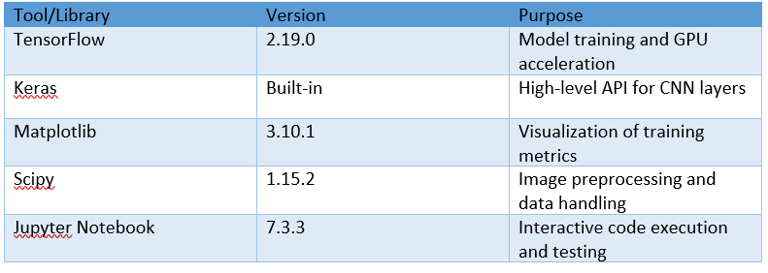

3. Dataset Preparation
Directory Structure
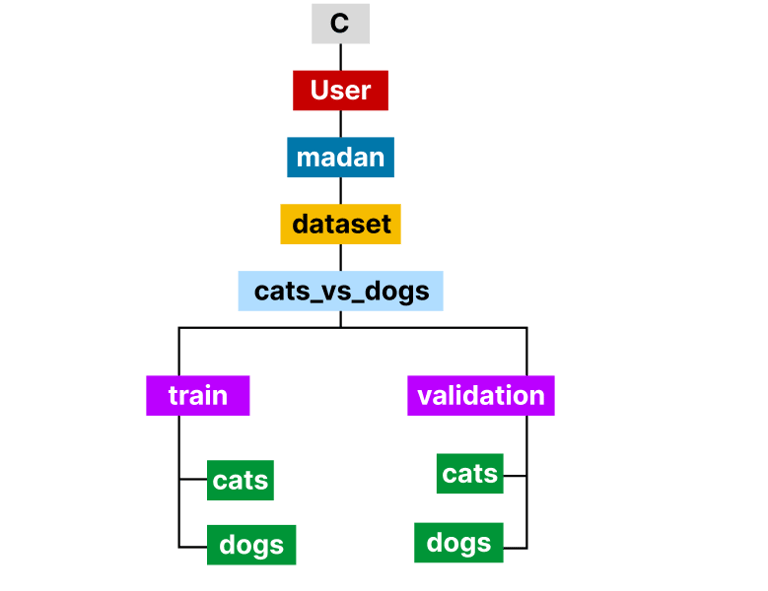

Also, WSL Access Path:
train_dir = "/mnt/c/Users/madan/datasets/cats_vs_dogs/train"
val_dir = "/mnt/c/Users/madan/datasets/cats_vs_dogs/validation"
Data Augmentation
Applied to the training dataset to reduce overfitting:
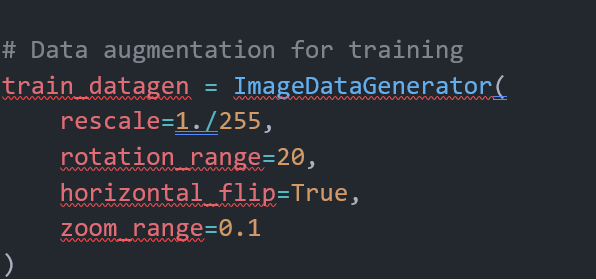

Validation Data: Only rescaled (no augmentation)


4. Model Architecture
Transfer Learning with MobileNetV2
Base model:
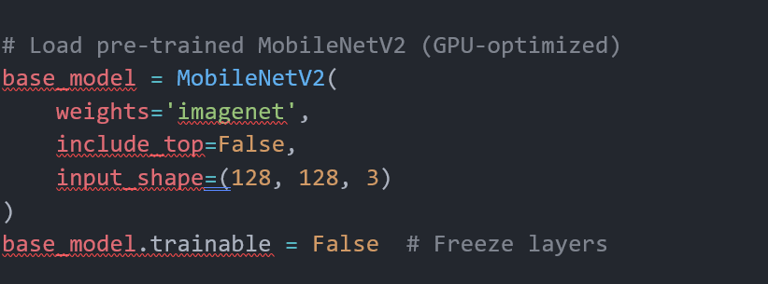

It prepares MobileNetV2 as a feature extractor, keeping its learned knowledge intact. Custom dense layers (from the previous code) will learn only the task-specific parts — like recognizing a new category (e.g., "Is this a cat or a dog?").
Custom layers:
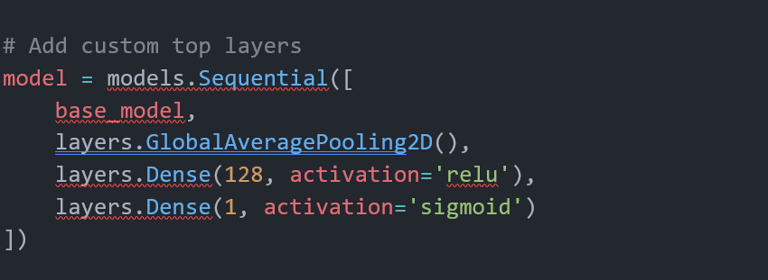

It takes an image, passes it through a pre-trained feature extractor, processes those features with a small custom classifier, and outputs a probability
Model Compilation


It compiles the model with the Adam optimizer, a binary classification loss function, and accuracy as the performance metric. During training, the model will use Adam to update the weights and minimize the binary cross-entropy loss, while tracking accuracy.
5. Training & GPU Acceleration
Training Configuration
Batch Size: 64 (optimized for GPU memory).
Epochs: 10 (training stabilized after epoch 5).
Workflow:
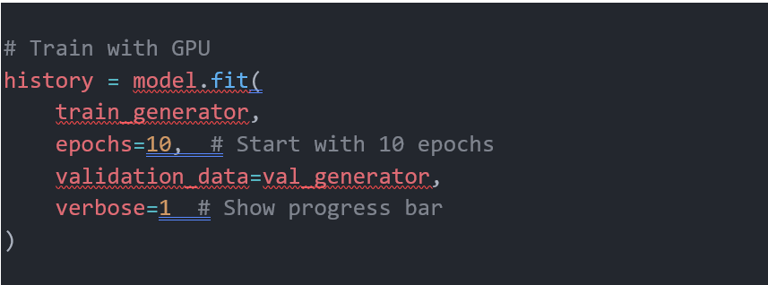

The model starts training on the training data (train_generator), running for 10 epochs.
GPU Utilization
Performance
CPU: ~15 minutes per epoch
GPU: ~3 minutes per epoch
Verified via WSL terminal:
nvidia-smi # Confirmed GPU usage during training
6. Results & Evaluation
Training Metrics
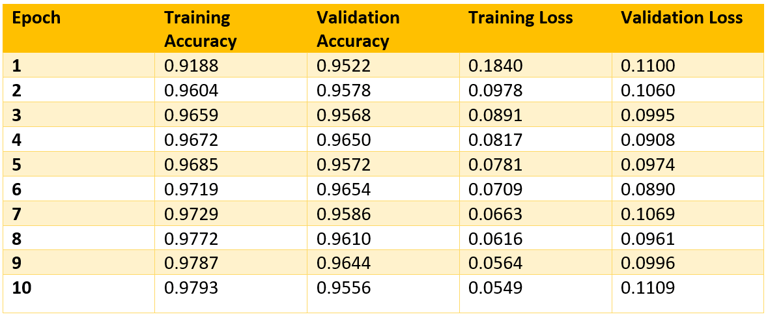

Screenshot within VS code

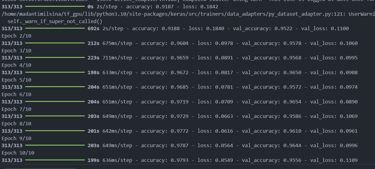
Training Curves


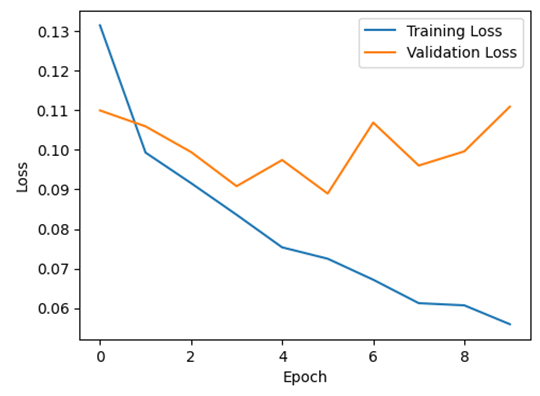

Saving trained model as HDF5
The trained model was successfully trained and trained model is saved as: cats_vs_dogs_gpu.h5


Real-World Testing with images
Six of the images were provided and their respective location were provided. This will use previously trained model: cats_vs_dogs_gpu.h5 to identify whether the provided image is Cat or Dog.


The final output of the code is:


Screenshot of output in VS code:
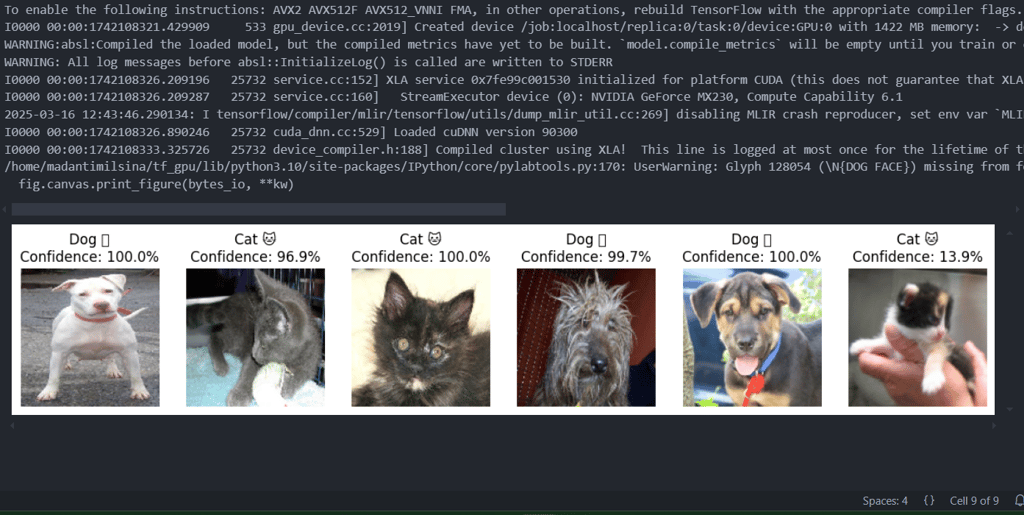

7. Challenges & Solutions
Issue: Unable to install CUDA & tensorflow and use GPU accelerated processing directly on project destination.
Solution: Followed instruction from: https://www.tensorflow.org/install/pip#windows wsl2 where I got to know about WSL2 and installing Ubuntu on my windows 11 computer. Followed by wsl –install command and installing Ubuntu from Microsoft Store, I connected VS Code to WSL2 environment by using WSL remote extension.
Issue: Dataset missing in local drive C. The Cell 2 in Jupyter notebook was struggling to execute.
Solution: I forgot to update the path for WSL, Artificial intelligence chatbots such as Deepseek and ChatGpt helped me to figure it out because I never knew that after installing Ubuntu, I always need to update the path. This gave me great lesson
Issue: Missing scipy dependency.
Solution: Installed via pip install scipy in the tf_gpu environment.
Issue: NameError: name 'model' not defined.
Solution: Ensured Cell 3 (model definition) was executed before training.
Issue: Slow initial training.
Solution: Increased batch size from 32 to 64 for GPU optimization
8. Key Learnings
GPU acceleration is key for large-scale deep learning. I have faced several problems because of low end CPU. GPU helped me to execute programs faster. I was new to the use of Ubuntu in the Windows operating system. This gave me opportunity to learn how we can also use Linux system within windows to use GPU for faster processing. I have researched and learned to debug cross platform path issues (Windows ↔ WSL). Finally, I learned to used Chatbots for error debugging and understanding the program that it provides.
Video output of the model:
This is the end of the project, Thank you so much for reviewing.